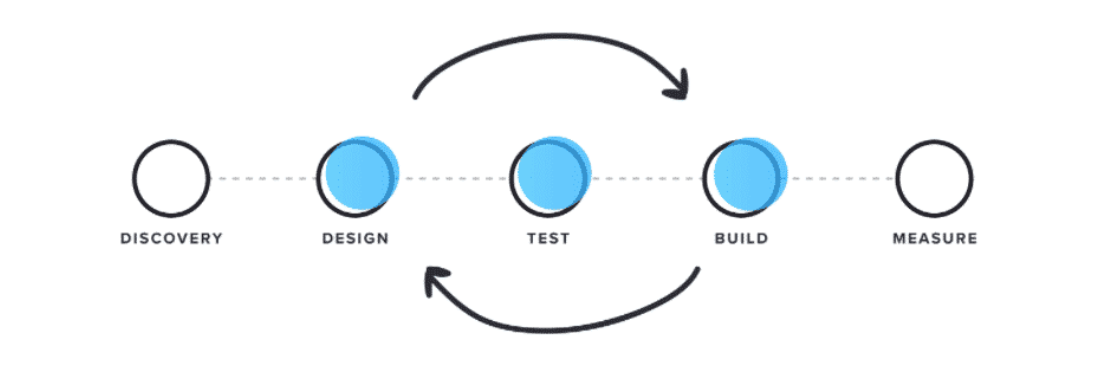Product Management and User Experience - How to Collaborate Effectively
PUBLISHED
12 September, 2023

Growth Marketing Manager
Product management and UX go hand in hand. But even though these concepts overlap, they’re not interchangeable.
In short, product managers oversee the execution of an idea, while UX designers are responsible for its intuitiveness. Overlap between the roles is expected, and the lines can become blurred, leading to confusion and power struggles, which may be detrimental to success.
As the saying goes, teamwork makes the dream work! This guide discusses the role of UX in product management, how the roles differ, and how teams can collaborate effectively to reach the shared goal without stepping on each other's toes.
Let’s dive in.
The role of UX in product management
UX is a priority in the product management process.
Product managers regularly collect customer feedback to improve the product continuously, and both roles learn how users interact with the product to help direct UX designs. PMs must work closely with UX designers to ensure their usability and aesthetics are on point in meeting the target audience's preferences.
Product management vs. user experience: what’s the difference?
The main difference between product management and user experience is how they achieve a competitive product. Product management focuses more on the business side, while UX designers concentrate on the user's interaction.
Here are some of their roles and responsibilities:
Product managers
They are responsible for the strategy and vision of the product.
They lead cross-functional teams in defining features and requirements to ensure the product is designed and marketed correctly according to their research.
They coordinate with different departments and stakeholders.
They make product decisions based on consumer demands and competition.
Their market research explores the market landscape, e.g., growth rate. Competition analysis to learn what established businesses are doing and customer research for target audience insights to create empathic products.
Their workflow process is iterative and sequential:
UX designers
The UX designer translates what is known about the customer into an intuitive specifically for them. Their role typically involves:
Responsible for the UI layout, UX, and functionality of the product.
They focus on designing an intuitive, satisfying product or app to engage the user.
They use many dedicated UX research methods to understand users better, including usability testing, user interviews, field studies, tree testing, and more.
They test designs directly with users to ensure they meet the requirements constructed by the PM.
UX designers follow an iterative process, too:
What do product managers and UX designers have in common?
Share the same goal: Both roles are focused on developing and improving products to solve the user’s problems.
Define the problem: They are both involved in defining the problem. They thoroughly consider the problem, the people they are solving it for, and how they can keep improving it.
Develop a deep understanding of the user: Although PMs typically focus on developing a relatively high-level knowledge of users, they both need to understand them empathically. This involves observing their behavior when interacting with the product and speaking to them to get feedback.
Both teams would find that their job of learning their customers inside out is made more accessible by using a leading behavior analytic tool like UXCam.
Our platform delivers precise quantitative and qualitative data on in-app behavior through session replays, journey analysis, segmentation, funnels, heatmaps, and more. Forward-thinking mobile app brands rely on our data to track their app’s performance and direct design decisions while keeping everyone in the loop.

Plus, customizable dashboards ensure that each team has easy access to the data they need—no more hunting around.
How product management and user experience can collaborate effectively
1. Acknowledge overlap
Firstly, it’s important to address the fact that there’s bound to be overlap. Acknowledging that there may be some toe-stepping is the start of a more collaborative relationship. It helps your team come to the table with a sense of understanding and respect for each other’s roles.
2. Clarify roles and responsibilities
Next, product management and UX need to figure out where the roles overlap (and where they don’t).
UX gurus at Nielsen Norman group have devised a flexible responsibility-assignment matrix to help define roles and responsibilities and determine how work will get done throughout various development lifecycle phases.
You can create one just for the product manager and UX role/teams.
Source: Responsibility-assignment matrix (“X’ indicates neither role is involved).
Alternatively, a simple Venn diagram indicating where the intersection and work opportunities are is another way to visualize who's responsible for what. Whichever method you choose, it’s essential to distribute the breakdown to your team so they can all be on the same page.
3. Define PM and UX collaboration areas
Once you’re both clear on the shared responsibilities, you can make the entire development process more efficient by identifying opportunities for collaboration. These can be at points during the development life cycle of per feature.
Here are some of the best opportunities for PM and UX to collaborate throughout the development process phases. All teams work differently so that you may find more opportunities.

Discovery: Understanding the customer’s problem creates a value proposition mostly owned and led by product management. The UX team will be instrumental here as they’ll benefit from speaking to the same customers during the design phase. Involving them earlier helps save time and gives them more context from the product’s team perspective.
Test: Both can work together to gather data to determine whether the product yields the expected results. For example, has the time to achieve a task reduced using prototype A or B? Typically, this phase is where the product and UX teams should come together to agree on the direction of the product based on the data and customer feedback.
Build: The build phase aims to develop a product that solves your target customer’s problem. If the product team ensures UX has understood the feature’s value proposition and conceptual model, and both teams confirm the engineering team understands critical interactions and context throughout, a product without too many compromises should be the result.
In a nutshell, the product manager, UX, and, if possible, the engineering team should collaborate as early as possible. The UX team’s deliverables impact most stages of development. Idea exchanges, information sharing, and transparency should produce the best result.
Make the dream work with UXCam
Product managers are responsible for a product's direction and overall strategy, while UX designers focus on design, functionality, and usability. Their shared goal of a successful outcome comes true when product management and UX teams collaborate well with lots of information sharing, transparency, and clearly defined roles.
UXCam helps thousands of leading product teams achieve their dreams with the best features and functionality to support the development process and beyond. Our platform supports collaboration and an ongoing understanding of the changing customer.
See for yourself by signing up for a free trial or demo today.
You might also be interested in these;
Practical guide to product management analytics
UX Optimization: 4 Steps to deliver a better user experience
A practical guide to mobile app product management
AUTHOR

Tope Longe
Growth Marketing Manager
Ardent technophile exploring the world of mobile app product management at UXCam.
What’s UXCam?
Related articles
Session Replay
Mobile Session Recording - The Complete Guide 2025
Why session replay is such a valuable feature, and what you should look out for when starting...

Annemarie Bufe
Content Manager
Product Management
14 Best Product Development Software for Every Team 2025
Discover the 14 best product development software tools to streamline collaboration, track progress, collect feedback, and build better products...

Tope Longe
Growth Marketing Manager
Product Management
13 Best Product Management Tools 2025 & When to Use Them
Find out the top tools that the best product managers use daily to perform better at...

Jane Leung
Content Director
